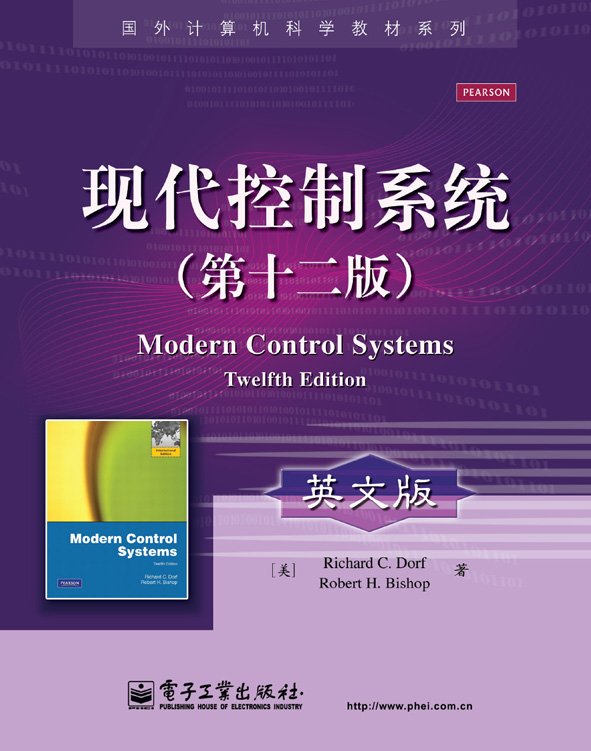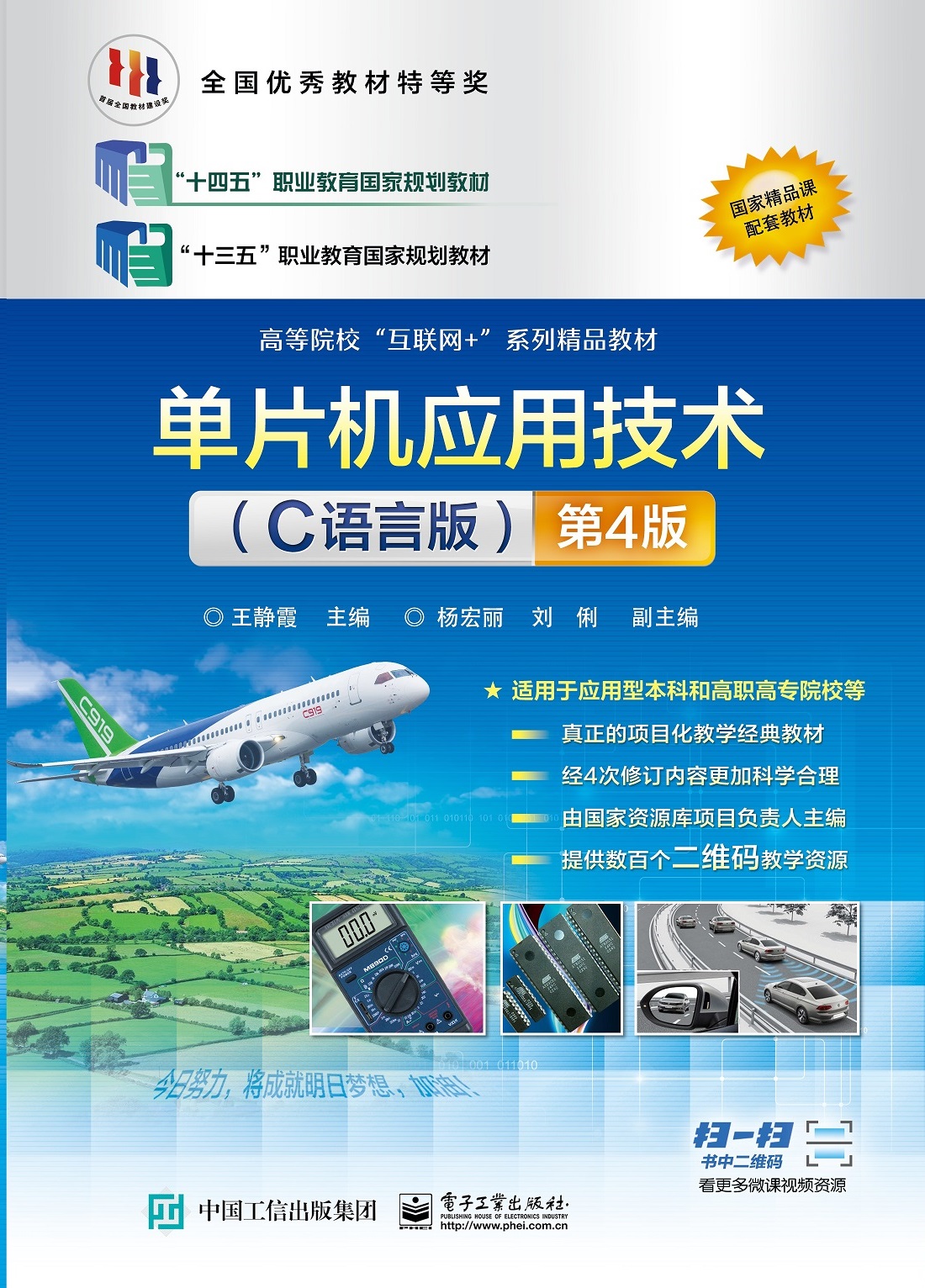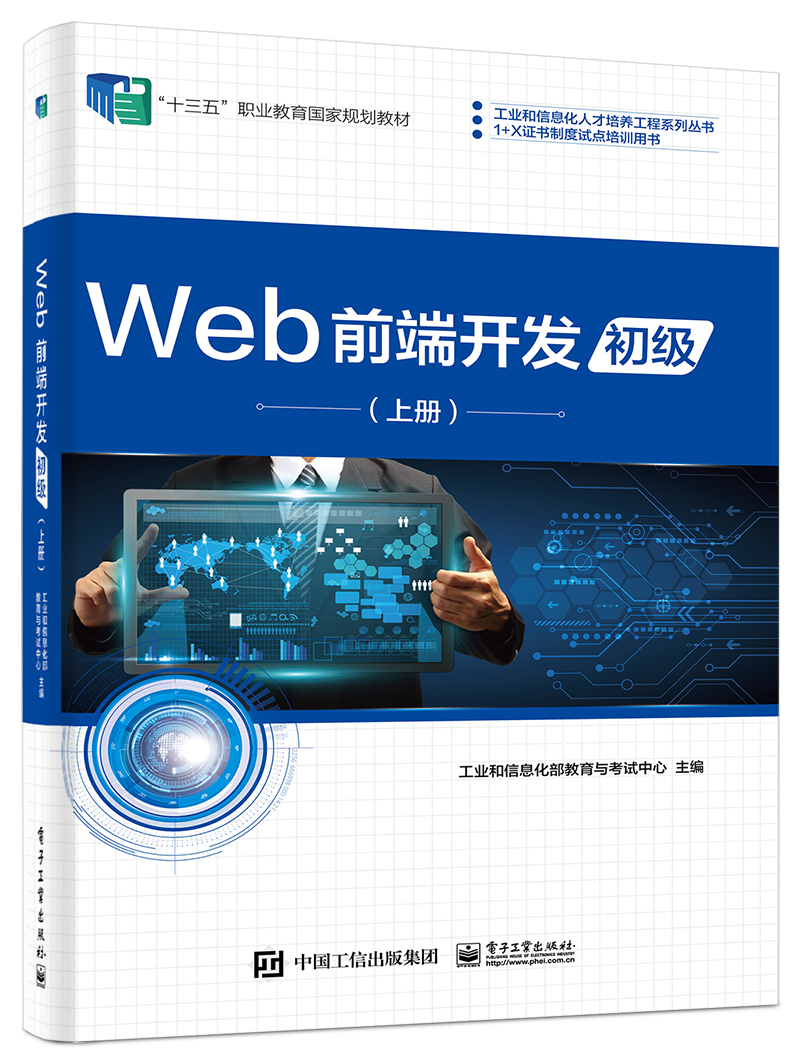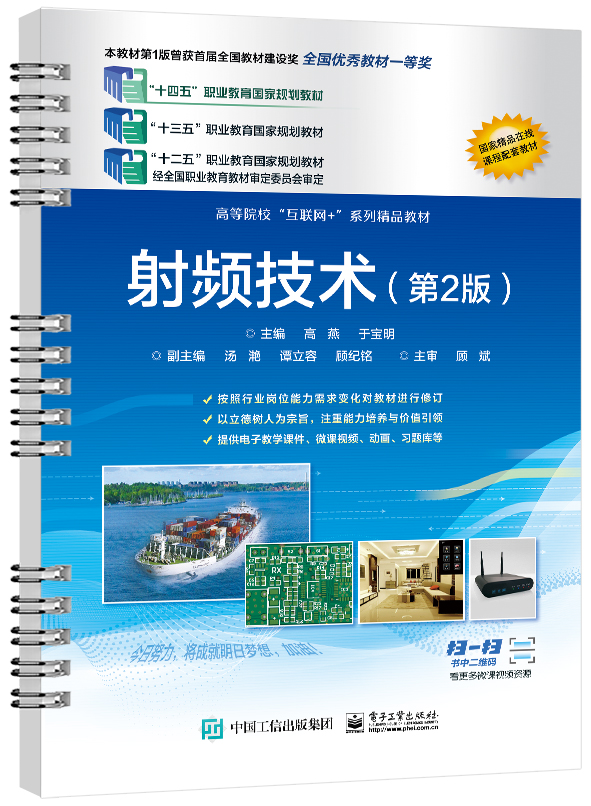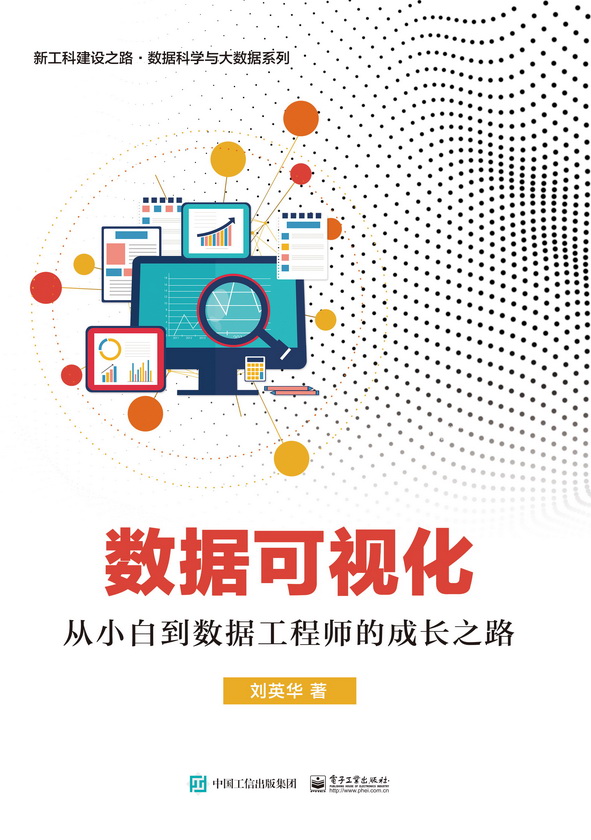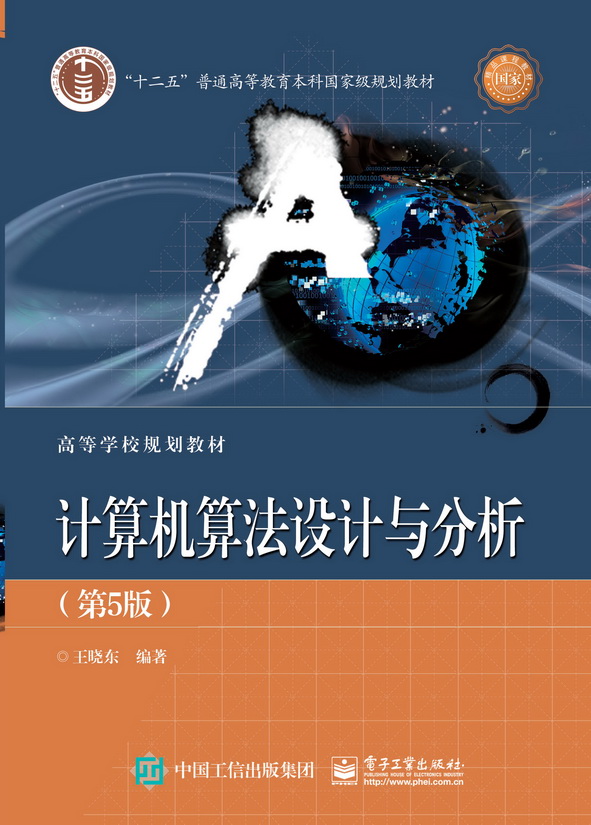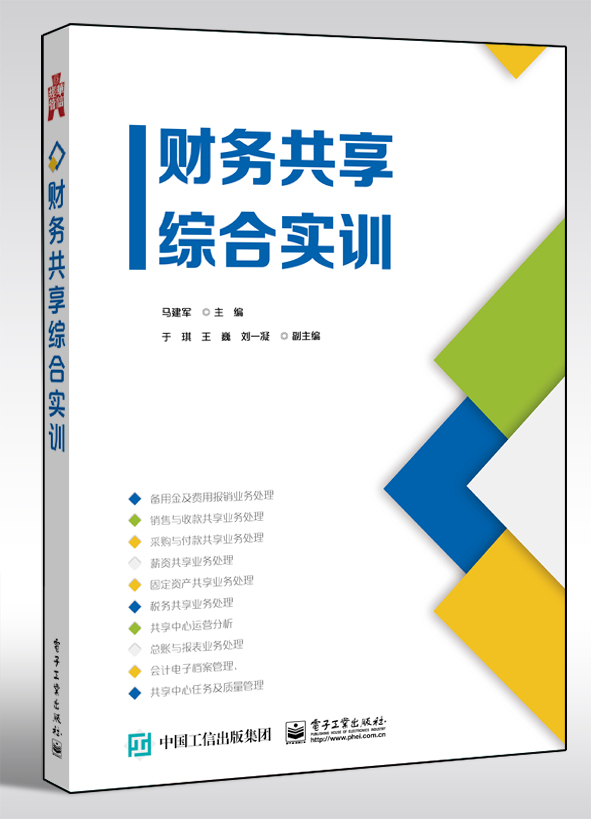现代控制系统(第十二版)(英文版)
作 译 者:理查德 C. 多尔夫,罗伯特 H. 毕晓普
出 版 日 期:2012-07-01
书 代 号:G0170650
I S B N:9787121170652
图书简介:
本书可供英文原版教辅:习题解答,PPT,国内老师编写的英文PPT;教辅申请咨询Email:Te_service@phei.com.cn。控制系统原理及相近课程是高等学校工科学生的核心课程之一。本书一直是该类课程畅销全球的教材范本。主要内容包括控制系统导论、系统数学模型、状态空间模型、反馈控制系统的特性、反馈控制系统的性能、反馈系统的稳定性、根轨迹法、频率响应方法、频域稳定性、反馈控制系统设计、状态变量反馈系统设计、鲁棒控制系统和数字控制系统等。本书的例子和习题大多取材于现代科技领域中的实际问题,新颖而恰当。学习和解决这些问题,可以使学生的创造性精神得到潜移默化的提升。
定价 118.0
您的专属联系人更多
联系人:马老师
电话:4557
邮箱:malan@phei.com
-
配 套 资 源图书特别说明:由于成本考虑,本书不作为参考书赠送。如果确有授课教材选用的需求,可将详细情况发送给本书专属联系人,我们将进一步沟通并酌情处理。
本书资源
本书暂无资源会员上传本书资源
-
图 书 内 容
内容简介
本书可供英文原版教辅:习题解答,PPT,国内老师编写的英文PPT;教辅申请咨询Email:Te_service@phei.com.cn。 控制系统原理及相近课程是高等学校工科学生的核心课程之一。本书一直是该类课程畅销全球的教材范本。主要内容包括控制系统导论、系统数学模型、状态空间模型、反馈控制系统的特性、反馈控制系统的性能、反馈系统的稳定性、根轨迹法、频率响应方法、频域稳定性、反馈控制系统设计、状态变量反馈系统设计、鲁棒控制系统和数字控制系统等。本书的例子和习题大多取材于现代科技领域中的实际问题,新颖而恰当。学习和解决这些问题,可以使学生的创造性精神得到潜移默化的提升。图书详情
ISBN:9787121170652开 本:16开页 数:1108字 数:2017本书目录
CHAPTER 1 Introduction to Control Systems 1.1 Introduction 1.2 Brief History of Automatic Control 1.3 Examples of Control Systems 1.4 Engineering Design 1.5 Control System Design 1.6 Mechatronic Systems 1.7 Green Engineering 1.8 The Future Evolution of Control Systems 1.9 Design Examples 1.10 Sequential Design Example: Disk Drive Read System 1.11 Summary CHAPTER 2 Mathematical Models of Systems 2.1 Introduction 2.2 Differential Equations of Physical Systems 2.3 Linear Approximations of Physical Systems 2.4 The Laplace Transform 2.5 The Transfer Function of Linear Systems 2.6 Block Diagram Models 2.7 Signal-Flow Graph Models 2.8 Design Examples 2.9 The Simulation of Systems Using Control Design Software 2.10 Sequential Design Example: Disk Drive Read System 2.11 Summary CHAPTER 3 State Variable Models 3.1 Introduction 3.2 The State Variables of a Dynamic System 3.3 The State Differential Equation 3.4 Signal-Flow Graph and Block Diagram Models 3.5 Alternative Signal-Flow Graph and Block Diagram Models 3.6 The Transfer Function from the State Equation 3.7 The Time Response and the State Transition Matrix 3.8 Design Examples 3.9 Analysis of State Variable Models Using Control Design Software 3.10 Sequential Design Example: Disk Drive Read System 3.11 Summary CHAPTER 4 Feedback Control System Characteristics 4.1 Introduction 4.2 Error Signal Analysis 4.3 Sensitivity of Control Systems to Parameter Variations 4.4 Disturbance Signals in a Feedback Control System 4.5 Control of the Transient Response 4.6 Steady-State Error 4.7 The Cost of Feedback 4.8 Design Examples 4.9 Control System Characteristics Using Control Design Software 4.10 Sequential Design Example: Disk Drive Read System 4.11 Summary CHAPTER 5 The Performance of Feedback Control Systems 5.1 Introduction 5.2 Test Input Signals 5.3 Performance of Second-Order Systems 5.4 Effects of a Third Pole and a Zero on the Second-Order System Response 5.5 The s-Plane Root Location and the Transient Response 5.6 The Steady-State Error of Feedback Control Systems 5.7 Performance Indices 5.8 The Simplification of Linear Systems 5.9 Design Examples 5.10 System Performance Using Control Design Software 5.11 Sequential Design Example: Disk Drive Read System 5.12 Summary CHAPTER 6 The Stability of Linear Feedback Systems 6.1 The Concept of Stability 6.2 The Routh–Hurwitz Stability Criterion 6.3 The Relative Stability of Feedback Control Systems 6.4 The Stability of State Variable Systems 6.5 Design Examples 6.6 System Stability Using Control Design Software 6.7 Sequential Design Example: Disk Drive Read System 6.8 Summary CHAPTER 7 The Root Locus Method 7.1 Introduction 7.2 The Root Locus Concept 7.3 The Root Locus Procedure 7.4 Parameter Design by the Root Locus Method 7.5 Sensitivity and the Root Locus 7.6 PID Controllers 7.7 Negative Gain Root Locus 7.8 Design Examples 7.9 The Root Locus Using Control Design Software 7.10 Sequential Design Example: Disk Drive Read System 7.11 Summary CHAPTER 8 Frequency Response Methods 8.1 Introduction 8.2 Frequency Response Plots 8.3 Frequency Response Measurements 8.4 Performance Specifications in the Frequency Domain 8.5 Log Magnitude and Phase Diagrams 8.6 Design Examples 8.7 Frequency Response Methods Using Control Design Software 8.8 Sequential Design Example: Disk Drive Read System 8.9 Summary CHAPTER 9 Stability in the Frequency Domain 9.1 Introduction 9.2 Mapping Contours in the s-Plane 9.3 The Nyquist Criterion 9.4 Relative Stability and the Nyquist Criterion 9.5 Time-Domain Performance Criteria in the Frequency Domain 9.6 System Bandwidth 9.7 The Stability of Control Systems with Time Delays 9.8 Design Examples 9.9 PID Controllers in the Frequency Domain 9.10 Stability in the Frequency Domain Using Control Design Software 9.11 Sequential Design Example: Disk Drive Read System 9.12 Summary CHAPTER 10 The Design of Feedback Control Systems 10.1 Introduction 10.2 Approaches to System Design 10.3 Cascade Compensation Networks 10.4 Phase-Lead Design Using the Bode Diagram 10.5 Phase-Lead Design Using the Root Locus 10.6 System Design Using Integration Networks 10.7 Phase-Lag Design Using the Root Locus 10.8 Phase-Lag Design Using the Bode Diagram 10.9 Design on the Bode Diagram Using Analytical Methods 10.10 Systems with a Prefilter 10.11 Design for Deadbeat Response 10.12 Design Examples 10.13 System Design Using Control Design Software 10.14 Sequential Design Example: Disk Drive Read System 10.15 Summary CHAPTER 11 The Design of State Variable Feedback Systems 11.1 Introduction 11.2 Controllability and Observability 11.3 Full-State Feedback Control Design 11.4 Observer Design 11.5 Integrated Full-State Feedback and Observer 11.6 Reference Inputs 11.7 Optimal Control Systems 11.8 Internal Model Design 11.9 Design Examples 11.10 State Variable Design Using Control Design Software 11.11 Sequential Design Example: Disk Drive Read System 11.12 Summary CHAPTER 12 Robust Control Systems 12.1 Introduction 12.2 Robust Control Systems and System Sensitivity 12.3 Analysis of Robustness 12.4 Systems with Uncertain Parameters 12.5 The Design of Robust Control Systems 12.6 The Design of Robust PID-Controlled Systems 12.7 The Robust Internal Model Control System 12.8 Design Examples 12.9 The Pseudo-Quantitative Feedback System 12.10 Robust Control Systems Using Control Design Software 12.11 Sequential Design Example: Disk Drive Read System 12.12 Summary CHAPTER 13 Digital Control Systems 13.1 Introduction 13.2 Digital Computer Control System Applications 13.3 Sampled-Data Systems 13.4 The z-Transform 13.5 Closed-Loop Feedback Sampled-Data Systems 13.6 Performance of a Sampled-Data, Second-Order System 13.7 Closed-Loop Systems with Digital Computer Compensation 13.8 The Root Locus of Digital Control Systems 13.9 Implementation of Digital Controllers 13.10 Design Examples 13.11 Digital Control Systems Using Control Design Software 13.12 Sequential Design Example: Disk Drive Read System 13.13 Summary APPENDIX A MATLAB Basics References Index展开前 言
导 读① 自动化的目的是以非人工方式对系统实行控制。经过近百年的发展,自动化技术已经在工业、农业、现代服务业、国防、科学研究、航空航天等领域取得了极为广泛的成功应用,自动化产品已经深入人类生产、生活的各个角落,乃至成为泛在的、时时刻刻都在发挥作用却又往往不为人们所察觉的“隐技术”。时至今日,自动化技术的发展水平已成为衡量一个国家现代化程度的重要标志。 现代生产和科学技术的发展,对自动化系统提出越来越高的要求,同时也为自动化技术的进一步发展提供了条件。特别是近20年来,随着通信、网络、嵌入式系统的发展,自动化技术发生了巨大的、深刻的变化,呈现出智能化、网络化、泛在化的特点,体现了控制工程、通信工程和电子工程的相互渗透与综合集成。更复杂的、更大规模的自动化系统纷纷投入实用,例如大型企业的全厂综合自动化系统、城市交通控制系统、全国铁路自动调度系统、空中交通管制和指挥系统、国家电网自动调度系统、军事指挥自动化系统等。并且,自动化技术已经从传统的工程领域拓展应用到非工程领域,如办公自动化、家庭自动化、现代农业、医疗自动化、宇宙探测、海洋勘探与开发等。 随着人们对资源、环境、温室气候、可持续发展等问题的日益广泛的关注,新能源、绿色工程等新兴领域迅猛发展。随着人类对生产、生活品质的要求不断提升,机器人的应用愈来愈广泛,可以大胆地预测,在不久的将来,机器人就会像今天的笔记本计算机一样普及,并且成为时尚用品。这些新兴的应用领域,要求自动化技术在更高的程度上模仿人类的智能,必将推动智能自动化技术进一步发展和应用。 “自动控制原理”课程是分析与设计控制系统的工程基础和理论基础,是自动化专业最重要的一门专业基础课,也是全世界大学中电子工程、电气工程、机械工程、化学工程等专业最重要的专业基础课之一。本课程旨在将学生引入丰富多彩的自动化领域,从系统的角度理解工程,建立自动化专业必需的控制工程概念、控制理论基础和知识结构体系,了解并掌握自动控制原理的基本概念、基本理论和基本方法,培养辨证思维能力、系统分析与工程综合能力,为今后的控制工程实践和控制理论研究奠定坚实的基础。 为了推进我国大学自动化与相关专业“自动控制原理”课程使用国外最新的原版教材,电子工业出版社出版了美国加州大学戴维斯分校Dorf教授和马凯特大学Bishop教授合著的Modern Control Systems一书的第十二版。本书第1章概述控制系统的基本概念、自动控制简史和发展趋势;引入了工程设计和控制系统设计的基本概念、基本要求,作者创造性地将控制系统设计过程分解为三大阶段、七个步骤;介绍了贯穿全书的系列设计案例:磁盘驱动器读取系统;新增“绿色工程”一节,引导读者在全球性问题的视角下思考控制工程设计;另外在后续章节中还新增了一些新能源汽车、风力发电等控制系统设计案例。第2章讲述系统的微分方程模型和传递函数模型、方框图模型和信号流图模型。第3章介绍系统的状态变量、状态空间模型。第4章研究反馈控制系统特性,引入系统跟踪误差、稳态误差、瞬态响应、系统灵敏度和互补灵敏度等概念。第5章以二阶系统为例,介绍了反馈控制系统的各项性能指标、附加的零极点对二阶系统性能的影响、系统降阶简化,频域中s平面极点的位置与时域瞬态响应的关系,控制系统的稳态误差,引入综合的性能准则。第6章介绍了稳定性和相对稳定性的概念,劳斯-赫尔维茨稳定性判据。第7章讲述根轨迹分析,总结了绘制根轨迹图的七个步骤,介绍了参数根轨迹,第十二版新增了负增益根轨迹,大大丰富了PID控制器、PID参数整定的内容。第8章讲述频率响应,介绍了奈奎斯特图、伯德图、对数幅相图、尼科尔斯图的绘制方法,频率响应的测量方法,各种频域的性能指标。第9章在频域中分析系统稳定性和相对稳定性,重点是奈奎斯特稳定判据。第10章讲述控制系统设计,重点是串联校正,采用伯德图和根轨迹两种方法设计超前校正网络、滞后校正网络、积分网络,引入了近20年出现的能够大大改善系统瞬态响应的预滤波器设计,介绍了最小拍响应系统设计。第11章讲述状态空间设计,包括能控性、能观性等概念,以及状态反馈、状态观测器、最优控制、内模控制等设计方法。第12章引入鲁棒控制,包括鲁棒性分析、鲁棒控制器设计、鲁棒PID控制器设计、鲁棒内模控制器设计、伪定量反馈系统设计等。第13章讲述数字控制系统,包括计算机控制、采样、z变换、z平面中稳定性分析、数字控制系统根轨迹、数字控制器实现等。 本书具有以下优点: 1. 从第1章就开始讲授控制系统设计,每一章都以控制系统设计为中心,使学生从最简单的比例控制器入手,逐步加强设计控制系统的能力,并使学生理解本章所讲授的内容在控制系统设计中的作用。而传统的教材和授课体系往往采用大量的篇幅讲授控制系统分析,到最后一章才讲授控制系统设计,此时已经面临期末考试了,学生疲于奔命,很难有足够的时间和精力去理解、掌握控制系统设计方法。本书的体系,在相当程度上能够避免传统教材和授课体系过分注重控制系统分析、忽视控制系统设计的痼疾。 2. 坚持理实交融,无论是例题还是习题,都不是抽象的数学问题,而是来自于工程和科研的实际课题。每一道题都是先介绍工程背景,从工程实践中抽取出物理模型,再从物理模型中抽象出数学模型,然后在数学模型上分析、设计控制系统,有些例题还介绍了实践的检验结果。这种理论与实践紧密结合的学风,值得今天的中国学人认真学习。 3. 本书涉及的多数概念、方法已经有几十年的发展历史,在其他教科书中都有详细介绍。但是,本书能够紧密结合最新的工程和科研实践,给成熟的概念和方法赋予新的应用背景,使初学者很感兴趣,大大提高学生学习自动化专业的热情,拓展学生的知识面。 4. 不同难度,具有广泛工程背景的涉及不同领域(包括工程领域、非工程领域)的测验题、练习题、习题、难题、设计题、计算机MATLAB习题,总数超过1000道,使初学者能够循序渐进地理解和建立控制系统的基本概念。 5. 除第1章外,每一章都有一节采用MATLAB进行控制系统计算机辅助分析和设计,围绕本章讲授的方法,引导学生逐步掌握MATLAB进行控制系统分析和设计的能力。 6. 贯穿全书各章设计了一个系列设计案例:磁盘驱动器读取系统。在每一章结束时,都会结合本章的基本概念、基本方法对这个案例进行分析和设计,逐步加深学生对控制系统的理解。 7. 基本上每间隔两年就推出一个新的版本,目前已经是第十二版,全世界超过400所学院和大学采用本书作为教材。 本书的第十二版又有以下改进: 1. 每一章结束时都增加了一类新的练习题:测验题SKILLS CHECK。包括是非题、选择题和配对题。学生学习完一章,开始做其他习题之前,考察一下对基本概念、基本知识的掌握程度,是非常有益的。 2. 新增了绿色工程、新能源领域中控制系统应用等内容,充分展现了现代控制系统的新面貌。 3. 加强了对PID控制器、PID参数整定的介绍篇幅,体现了近30年来控制工程的实际状况,以及控制工程师对经典PID控制器的新的理解和认识。 我国大学自动化专业在本科阶段必修课程已经形成“自动控制原理”、“现代控制理论”、“计算机控制”的范式,所讲授的现代控制理论、计算机控制技术已经超越了本书的范畴。所以,本书最佳使用方案是配合“自动控制原理”课程教学。根据各个学校课程的实际授课学时,建议采用以下授课计划: ● 80学时 第1章,第2章,第4章,第5章 第6章 6.1节~6.3节、6.5节~6.8节 第7章~第10章 ● 72学时 第1章 第2章 2.1节~2.8节、2.10节和2.11节 第4章 4.1节~4.8节、4.10节和4.11节 第5章 5.1节~5.9节、5.11节和5.12节 第6章 6.1节~6.3节、6.5节、6.7节和6.8节 第7章 7.1节~7.8节、7.10节和7.11节 第8章 8.1节~8.6节、8.8节和8.9节 第9章 9.1节~9.9节、9.11节和9.12节 第10章 10.1节~10.12节、10.14节和10.15节 所有采用MATLAB进行控制系统分析、设计的内容,留在习题课由助教讲授,或者留给学生自学。 ● 64学时 第1章 1.1节~1.5节、1.8节~1.11节 第2章 2.1节~2.6节、2.8节、2.10节和2.11节 第4章 4.1节~4.2节、4.4节~4.8节、4.10节和4.11节 第5章 5.1节~5.6节、5.9节、5.11节和5.12节 第6章 6.1节~6.3节、6.5节、6.7节和6.8节 第7章 7.1节~7.3节、7.6节、7.8节、7.10节和7.11节 第8章 8.1节~8.6节、8.8节和8.9节 第9章 9.1节~9.6节、9.8节和9.9节、9.11节和9.12节 第10章 10.1节~10.10节、10.12节、10.14节和10.15节 ● 48学时 第1章 1.1节~1.3节、1.5节、1.9节~1.11节 第2章 2.1节~2.6节、2.8节、2.10节和2.11节 第4章 4.1节和4.2节、4.4节~4.8节、4.10节和4.11节 第5章 5.1节~5.3节、5.5节和5.6节、5.9节、5.11节和5.12节 第6章 6.1节和6.2节、6.5节、6.7节和6.8节 第7章 7.1节~7.3节、7.8节、7.10节和7.11节 第8章 8.1节~8.4节、8.6节、8.8节和8.9节 第9章 9.1节~9.4节、9.6节、9.8节、9.11节和9.12节 第10章 10.1节~10.5节、10.7节和10.8节、10.12节、10.14节和10.15节。 如果针对其他专业的本科生或研究生,需要在一门课程中讲授完自动控制原理、现代控制理论和计算机控制的知识,则建议采用以下授课计划: ● 96学时(可以分成两个学期开设) 第1章 1.1节~1.5节、1.9节~1.11节 第2章 2.1节~2.6节、2.8节、2.10节和2.11节 第3章 3.1节~3.3节、3.6节~3.8节、3.10节和3.11节 第4章 4.1节和4.2节、4.4节~4.8节、4.10节和4.11节 第5章 5.1节~5.6节、5.9节、5.11节和5.12节 第6章 6.1节~6.5节、6.7节和6.8节 第7章 7.1节~7.3节、7.6节、7.8节、7.10节和7.11节 第8章 8.1节~8.6节、8.8节和8.9节 第9章 9.1节~9.6节、9.8节和9.9节、9.11节和9.12节 第10章 10.1节~10.8节、10.10节、10.12节、10.14节和10.15节 第11章 11.1节~11.9节、11.11节和11.12节 第12章 12.1节~12.8节、12.11节和12.12节 第13章 13.1节~13.10节、13.12节和13.13节 ● 80学时 第1章 1.1节~1.3节、1.5节、1.9节~1.11节 第2章 2.1节~2.6节、2.8节、2.10节和2.11节 第3章 3.1节~3.3节、3.6节~3.8节、3.10节和3.11节 第4章 4.1节和4.2节、4.4节~4.8节、4.10节和4.11节 第5章 5.1节~5.6节、5.9节、5.11节和5.12节 第6章 6.1节~6.5节、6.7节和6.8节 第7章 7.1节~7.3节、7.8节、7.10节和7.11节 第8章 8.1节~8.4节、8.6节、8.8节和8.9节 第9章 9.1节~9.4节、9.6节、9.8节、9.11节和9.12节 第10章 10.1节~10.5节、10.7节和10.8节、10.10节、10.12节、10.14节和10.15节 第11章 11.1节~11.5节、11.9节、11.11节和11.12节 第13章 13.1节~13.10节、13.12节和13.13节 ● 64学时 第1章 1.1节~1.3节、1.5节、1.9节~1.11节 第2章 2.1节~2.6节、2.8节、2.10节和2.11节 第3章 3.1节~3.3节、3.6节~3.8节、3.10节和3.11节 第4章 4.1节和4.2节、4.4节~4.8节、4.10节和4.11节 第5章 5.1节~5.3节、5.6节、5.9节、5.11节和5.12节 第6章 6.1节和6.2节、6.4节和6.5节、6.7节和6.8节 第7章 7.1节~7.3节、7.8节、7.10节和7.11节 第8章 8.1节~8.4节、8.6节、8.8节和8.9节 第9章 9.1节~9.4节、9.6节、9.8节、9.11节和9.12节 第10章 10.1节~10.5节、10.7节和10.8节、10.12节、10.14节和10.15节 第11章 11.1节~11.5节、11.9节、11.11节和11.12节 第13章 13.1节~13.7节、13.9节、13.12节和13.13节。 多年来,我采用本书第十一版、第十二版原版教材给中国科学技术大学自动化系的学生讲授“自动控制原理”,取得了较好的教学效果,相信更多的学生会从本书中获益。 吴 刚 工业自动化研究所 中国科学技术大学 导读 自动化的目的是以非人工方式对系统实行控制。经过近百年的发展,自动化技术已经在工业、农业、现代服务业、国防、科学研究、航空航天等领域取得了极为广泛的成功应用,自动化产品已经深入人类生产、生活的各个角落,乃至成为泛在的、时时刻刻都在发挥作用却又往往不为人们所察觉的“隐技术”。时至今日,自动化技术的发展水平已成为衡量一个国家现代化程度的重要标志。 现代生产和科学技术的发展,对自动化系统提出越来越高的要求,同时也为自动化技术的进一步发展提供了条件。特别是近20年来,随着通信、网络、嵌入式系统的发展,自动化技术发生了巨大的、深刻的变化,呈现出智能化、网络化、泛在化的特点,体现了控制工程、通信工程和电子工程的相互渗透与综合集成。更复杂的、更大规模的自动化系统纷纷投入实用,例如大型企业的全厂综合自动化系统、城市交通控制系统、全国铁路自动调度系统、空中交通管制和指挥系统、国家电网自动调度系统、军事指挥自动化系统等。并且,自动化技术已经从传统的工程领域拓展应用到非工程领域,如办公自动化、家庭自动化、现代农业、医疗自动化、宇宙探测、海洋勘探与开发等。 随着人们对资源、环境、温室气候、可持续发展等问题的日益广泛的关注,新能源、绿色工程等新兴领域迅猛发展。随着人类对生产、生活品质的要求不断提升,机器人的应用愈来愈广泛,可以大胆地预测,在不久的将来,机器人就会像今天的笔记本计算机一样普及,并且成为时尚用品。这些新兴的应用领域,要求自动化技术在更高的程度上模仿人类的智能,必将推动智能自动化技术进一步发展和应用。 “自动控制原理”课程是分析与设计控制系统的工程基础和理论基础,是自动化专业最重要的一门专业基础课,也是全世界大学中电子工程、电气工程、机械工程、化学工程等专业最重要的专业基础课之一。本课程旨在将学生引入丰富多彩的自动化领域,从系统的角度理解工程,建立自动化专业必需的控制工程概念、控制理论基础和知识结构体系,了解并掌握自动控制原理的基本概念、基本理论和基本方法,培养辨证思维能力、系统分析与工程综合能力,为今后的控制工程实践和控制理论研究奠定坚实的基础。 为了推进我国大学自动化与相关专业“自动控制原理”课程使用国外最新的原版教材,电子工业出版社出版了美国加州大学戴维斯分校Dorf教授和马凯特大学Bishop教授合著的Modern Control Systems一书的第十二版。本书第1章概述控制系统的基本概念、自动控制简史和发展趋势;引入了工程设计和控制系统设计的基本概念、基本要求,作者创造性地将控制系统设计过程分解为三大阶段、七个步骤;介绍了贯穿全书的系列设计案例:磁盘驱动器读取系统;新增“绿色工程”一节,引导读者在全球性问题的视角下思考控制工程设计;另外在后续章节中还新增了一些新能源汽车、风力发电等控制系统设计案例。第2章讲述系统的微分方程模型和传递函数模型、方框图模型和信号流图模型。第3章介绍系统的状态变量、状态空间模型。第4章研究反馈控制系统特性,引入系统跟踪误差、稳态误差、瞬态响应、系统灵敏度和互补灵敏度等概念。第5章以二阶系统为例,介绍了反馈控制系统的各项性能指标、附加的零极点对二阶系统性能的影响、系统降阶简化,频域中s平面极点的位置与时域瞬态响应的关系,控制系统的稳态误差,引入综合的性能准则。第6章介绍了稳定性和相对稳定性的概念,劳斯-赫尔维茨稳定性判据。第7章讲述根轨迹分析,总结了绘制根轨迹图的七个步骤,介绍了参数根轨迹,第十二版新增了负增益根轨迹,大大丰富了PID控制器、PID参数整定的内容。第8章讲述频率响应,介绍了奈奎斯特图、伯德图、对数幅相图、尼科尔斯图的绘制方法,频率响应的测量方法,各种频域的性能指标。第9章在频域中分析系统稳定性和相对稳定性,重点是奈奎斯特稳定判据。第10章讲述控制系统设计,重点是串联校正,采用伯德图和根轨迹两种方法设计超前校正网络、滞后校正网络、积分网络,引入了近20年出现的能够大大改善系统瞬态响应的预滤波器设计,介绍了最小拍响应系统设计。第11章讲述状态空间设计,包括能控性、能观性等概念,以及状态反馈、状态观测器、最优控制、内模控制等设计方法。第12章引入鲁棒控制,包括鲁棒性分析、鲁棒控制器设计、鲁棒PID控制器设计、鲁棒内模控制器设计、伪定量反馈系统设计等。第13章讲述数字控制系统,包括计算机控制、采样、z变换、z平面中稳定性分析、数字控制系统根轨迹、数字控制器实现等。 本书具有以下优点: 1. 从第1章就开始讲授控制系统设计,每一章都以控制系统设计为中心,使学生从最简单的比例控制器入手,逐步加强设计控制系统的能力,并使学生理解本章所讲授的内容在控制系统设计中的作用。而传统的教材和授课体系往往采用大量的篇幅讲授控制系统分析,到最后一章才讲授控制系统设计,此时已经面临期末考试了,学生疲于奔命,很难有足够的时间和精力去理解、掌握控制系统设计方法。本书的体系,在相当程度上能够避免传统教材和授课体系过分注重控制系统分析、忽视控制系统设计的痼疾。 2. 坚持理实交融,无论是例题还是习题,都不是抽象的数学问题,而是来自于工程和科研的实际课题。每一道题都是先介绍工程背景,从工程实践中抽取出物理模型,再从物理模型中抽象出数学模型,然后在数学模型上分析、设计控制系统,有些例题还介绍了实践的检验结果。这种理论与实践紧密结合的学风,值得今天的中国学人认真学习。 3. 本书涉及的多数概念、方法已经有几十年的发展历史,在其他教科书中都有详细介绍。但是,本书能够紧密结合最新的工程和科研实践,给成熟的概念和方法赋予新的应用背景,使初学者很感兴趣,大大提高学生学习自动化专业的热情,拓展学生的知识面。 4. 不同难度,具有广泛工程背景的涉及不同领域(包括工程领域、非工程领域)的测验题、练习题、习题、难题、设计题、计算机MATLAB习题,总数超过1000道,使初学者能够循序渐进地理解和建立控制系统的基本概念。 5. 除第1章外,每一章都有一节采用MATLAB进行控制系统计算机辅助分析和设计,围绕本章讲授的方法,引导学生逐步掌握MATLAB进行控制系统分析和设计的能力。 6. 贯穿全书各章设计了一个系列设计案例:磁盘驱动器读取系统。在每一章结束时,都会结合本章的基本概念、基本方法对这个案例进行分析和设计,逐步加深学生对控制系统的理解。 7. 基本上每间隔两年就推出一个新的版本,目前已经是第十二版,全世界超过400所学院和大学采用本书作为教材。 本书的第十二版又有以下改进: 1. 每一章结束时都增加了一类新的练习题:测验题SKILLS CHECK。包括是非题、选择题和配对题。学生学习完一章,开始做其他习题之前,考察一下对基本概念、基本知识的掌握程度,是非常有益的。 2. 新增了绿色工程、新能源领域中控制系统应用等内容,充分展现了现代控制系统的新面貌。 3. 加强了对PID控制器、PID参数整定的介绍篇幅,体现了近30年来控制工程的实际状况,以及控制工程师对经典PID控制器的新的理解和认识。 我国大学自动化专业在本科阶段必修课程已经形成“自动控制原理”、“现代控制理论”、“计算机控制”的范式,所讲授的现代控制理论、计算机控制技术已经超越了本书的范畴。所以,本书最佳使用方案是配合“自动控制原理”课程教学。根据各个学校课程的实际授课学时,建议采用以下授课计划: ● 80学时 第1章,第2章,第4章,第5章 第6章 6.1节~6.3节、6.5节~6.8节 第7章~第10章 ● 72学时 第1章 第2章 2.1节~2.8节、2.10节和2.11节 第4章 4.1节~4.8节、4.10节和4.11节 第5章 5.1节~5.9节、5.11节和5.12节 第6章 6.1节~6.3节、6.5节、6.7节和6.8节 第7章 7.1节~7.8节、7.10节和7.11节 第8章 8.1节~8.6节、8.8节和8.9节 第9章 9.1节~9.9节、9.11节和9.12节 第10章 10.1节~10.12节、10.14节和10.15节 所有采用MATLAB进行控制系统分析、设计的内容,留在习题课由助教讲授,或者留给学生自学。 ● 64学时 第1章 1.1节~1.5节、1.8节~1.11节 第2章 2.1节~2.6节、2.8节、2.10节和2.11节 第4章 4.1节~4.2节、4.4节~4.8节、4.10节和4.11节 第5章 5.1节~5.6节、5.9节、5.11节和5.12节 第6章 6.1节~6.3节、6.5节、6.7节和6.8节 第7章 7.1节~7.3节、7.6节、7.8节、7.10节和7.11节 第8章 8.1节~8.6节、8.8节和8.9节 第9章 9.1节~9.6节、9.8节和9.9节、9.11节和9.12节 第10章 10.1节~10.10节、10.12节、10.14节和10.15节 ● 48学时 第1章 1.1节~1.3节、1.5节、1.9节~1.11节 第2章 2.1节~2.6节、2.8节、2.10节和2.11节 第4章 4.1节和4.2节、4.4节~4.8节、4.10节和4.11节 第5章 5.1节~5.3节、5.5节和5.6节、5.9节、5.11节和5.12节 第6章 6.1节和6.2节、6.5节、6.7节和6.8节 第7章 7.1节~7.3节、7.8节、7.10节和7.11节 第8章 8.1节~8.4节、8.6节、8.8节和8.9节 第9章 9.1节~9.4节、9.6节、9.8节、9.11节和9.12节 第10章 10.1节~10.5节、10.7节和10.8节、10.12节、10.14节和10.15节。 如果针对其他专业的本科生或研究生,需要在一门课程中讲授完自动控制原理、现代控制理论和计算机控制的知识,则建议采用以下授课计划: ● 96学时(可以分成两个学期开设) 第1章 1.1节~1.5节、1.9节~1.11节 第2章 2.1节~2.6节、2.8节、2.10节和2.11节 第3章 3.1节~3.3节、3.6节~3.8节、3.10节和3.11节 第4章 4.1节和4.2节、4.4节~4.8节、4.10节和4.11节 第5章 5.1节~5.6节、5.9节、5.11节和5.12节 第6章 6.1节~6.5节、6.7节和6.8节 第7章 7.1节~7.3节、7.6节、7.8节、7.10节和7.11节 第8章 8.1节~8.6节、8.8节和8.9节 第9章 9.1节~9.6节、9.8节和9.9节、9.11节和9.12节 第10章 10.1节~10.8节、10.10节、10.12节、10.14节和10.15节 第11章 11.1节~11.9节、11.11节和11.12节 第12章 12.1节~12.8节、12.11节和12.12节 第13章 13.1节~13.10节、13.12节和13.13节 ● 80学时 第1章 1.1节~1.3节、1.5节、1.9节~1.11节 第2章 2.1节~2.6节、2.8节、2.10节和2.11节 第3章 3.1节~3.3节、3.6节~3.8节、3.10节和3.11节 第4章 4.1节和4.2节、4.4节~4.8节、4.10节和4.11节 第5章 5.1节~5.6节、5.9节、5.11节和5.12节 第6章 6.1节~6.5节、6.7节和6.8节 第7章 7.1节~7.3节、7.8节、7.10节和7.11节 第8章 8.1节~8.4节、8.6节、8.8节和8.9节 第9章 9.1节~9.4节、9.6节、9.8节、9.11节和9.12节 第10章 10.1节~10.5节、10.7节和10.8节、10.10节、10.12节、10.14节和10.15节 第11章 11.1节~11.5节、11.9节、11.11节和11.12节 第13章 13.1节~13.10节、13.12节和13.13节 ● 64学时 第1章 1.1节~1.3节、1.5节、1.9节~1.11节 第2章 2.1节~2.6节、2.8节、2.10节和2.11节 第3章 3.1节~3.3节、3.6节~3.8节、3.10节和3.11节 第4章 4.1节和4.2节、4.4节~4.8节、4.10节和4.11节 第5章 5.1节~5.3节、5.6节、5.9节、5.11节和5.12节 第6章 6.1节和6.2节、6.4节和6.5节、6.7节和6.8节 第7章 7.1节~7.3节、7.8节、7.10节和7.11节 第8章 8.1节~8.4节、8.6节、8.8节和8.9节 第9章 9.1节~9.4节、9.6节、9.8节、9.11节和9.12节 第10章 10.1节~10.5节、10.7节和10.8节、10.12节、10.14节和10.15节 第11章 11.1节~11.5节、11.9节、11.11节和11.12节 第13章 13.1节~13.7节、13.9节、13.12节和13.13节。 多年来,我采用本书第十一版、第十二版原版教材给中国科学技术大学自动化系的学生讲授“自动控制原理”,取得了较好的教学效果,相信更多的学生会从本书中获益。 吴 刚 工业自动化研究所 中国科学技术大学 Preface MODERN CONTROL SYSTEMS—THE BOOK Global issues such as climate change, clean water, sustainability, waste management, emissions reduction, and minimizing raw material and energy use have caused many engineers to re-think existing approaches to engineering design. One outcome of the evolving design strategy is to consider green engineering. The goal of green engineering is to design products that minimize pollution, reduce the risk to human health, and improve the environment. Applying the principles of green engineering highlights the power of feedback control systems as an enabling technology. To reduce greenhouse gases and minimize pollution, it is necessary to improve both the quality and quantity of our environmental monitoring systems. One example is to use wireless measurements on mobile sensing platforms to measure the external environment. Another example is to monitor the quality of the delivered power to measure leading and lagging power, voltage variations, and waveform harmonics. Many green engineering systems and components require careful monitoring of current and voltages. For example, current transformers are used in various capacities for measuring and monitoring current within the power grid network of interconnected systems used to deliver electricity. Sensors are key components of any feedback control system because the measurements provide the required information as to the state of the system so the control system can take the appropriate action. The role of control systems in green engineering will continue to expand as the global issues facing us require ever increasing levels of automation and precision. In the book, we present key examples from green engineering such as wind turbine control and modeling of a photovoltaic generator for feedback control to achieve maximum power delivery as the sunlight varies over time. The wind and sun are important sources of renewable energy around the world. Wind energy conversion to electric power is achieved by wind energy turbines connected to electric generators. The intermittency characteristic of the wind makes smart grid development essential to bring the energy to the power grid when it is available and to provide energy from other sources when the wind dies down or is disrupted. A smart grid can be viewed as a system comprised of hardware and software that routes power more reliably and efficiently to homes, businesses, schools, and other users of power in the presence of intermittency and other disturbances. The irregular character of wind direction and power also results in the need for reliable, steady electric energy by using control systems on the wind turbines themselves. The goal of these control devices is to reduce the effects of wind intermittency and the effect of wind direction change. Energy storage systems are also critical technologies for green engineering. We seek energy storage systems that are renewable, such as fuel cells. Active control can be a key element of effective renewable energy storage systems as well. Control engineering is an exciting and a challenging field. By its very nature, control engineering is a multidisciplinary subject, and it has taken its place as a core course in the engineering curriculum. It is reasonable to expect different approaches to mastering and practicing the art of control engineering. Since the subject has a strong mathematical foundation, we might approach it from a strictly theoretical point of view, emphasizing theorems and proofs. On the other hand, since the ultimate objective is to implement controllers in real systems, we might take an ad hoc approach relying only on intuition and hands-on experience when designing feedback control systems. Our approach is to present a control engineering methodology that, while based on mathematical fundamentals, stresses physical system modeling and practical control system designs with realistic system specifications. We believe that the most important and productive approach to learning is for each of us to rediscover and re-create anew the answers and methods of the past. Thus, the ideal is to present the student with a series of problems and questions and point to some of the answers that have been obtained over the past decades. The traditional method—to confront the student not with the problem but with the finished solution—is to deprive the student of all excitement, to shut off the creative impulse, to reduce the adventure of humankind to a dusty heap of theorems. The issue, then, is to present some of the unanswered and important problems that we continue to confront, for it may be asserted that what we have truly learned and understood, we discovered ourselves. The purpose of this book is to present the structure of feedback control theory and to provide a sequence of exciting discoveries as we proceed through the text and problems. If this book is able to assist the student in discovering feedback control system theory and practice, it will have succeeded. WHAT’S NEW IN THIS EDITION This latest edition of Modern Control Systems incorporates the following key updates: A new section in Chapter 1 on green engineering. The role of control systems in green engineering will continue to expand as global environmental challenges require ever increasing levels of automation and precision. New design problems in key chapters that illustrate control design to support green engineering applications, such as smart grids, environmental monitoring, wind power and solar power generation. A new section in each chapter entitled “Skills Check” that allows students to test their knowledge of the basic principles. Answers are provided at the end of each chapter for immediate feedback. A new section on the negative gain root locus. A new section on PID tuning methods with emphasis on manual tuning and Ziegler-Nichols tuning methods. Over 20% of the problems updated or newly added. With the twelfth edition we now have a total of over 1000 end-of-chapter exercises, problems, advanced problems, design problems, and computer problems. Instructors will have no difficulty finding different problems to assign semester after semester. Video solutions of representative homework problems are available on the companion website: www.pearsonhighered.com/dorf. THE AUDIENCE This text is designed for an introductory undergraduate course in control systems for engineering students. There is very little demarcation between aerospace, chemical, electrical, industrial, and mechanical engineering in control system practice; therefore, this text is written without any conscious bias toward one discipline. Thus, it is hoped that this book will be equally useful for all engineering disciplines and, perhaps, will assist in illustrating the utility of control engineering. The numerous problems and examples represent all fields, and the examples of the sociological, biological, ecological, and economic control systems are intended to provide the reader with an awareness of the general applicability of control theory to many facets of life. We believe that exposing students of one discipline to examples and problems from other disciplines will provide them with the ability to see beyond their own field of study. Many students pursue careers in engineering fields other than their own. For example, many electrical and mechanical engineers find themselves in the aerospace industry working alongside aerospace engineers. We hope this introduction to control engineering will give students a broader understanding of control system design and analysis. In its first eleven editions, Modern Control Systems has been used in senior-level courses for engineering students at more than 400 colleges and universities. It also has been used in courses for engineering graduate students with no previous background in control engineering. THE TWELFTH EDITION A companion website is available to students and faculty using the twelfth edition. The website contains all the m-files in the book, Laplace and z-transform tables, written materials on matrix algebra and complex numbers, symbols, units, and conversion factors, and an introduction to the LabVIEW MathScript RT Module. An icon will appear in the book margin whenever there is additional related material on the website. The companion website also includes video solutions of representative homework problems and a complete Pearson eText. The MCS website address is www.pearsonhighered.com/dorf. With the twelfth edition, we continue to evolve the design emphasis that historically has characterized Modern Control Systems. Using the real-world engineering problems associated with designing a controller for a disk drive read system, we present the Sequential Design Example (identified by an arrow icon in the text), which is considered sequentially in each chapter using the methods and concepts in that chapter. Disk drives are used in computers of all sizes and they represent an important application of control engineering. Various aspects of the design of controllers for the disk drive read system are considered in each chapter. For example, in Chapter 1 we identify the control goals, identify the variables to be controlled, write the control specifications, and establish the preliminary system configuration for the disk drive. Then, in Chapter 2, we obtain models of the process, sensors, and actuators. In the remaining chapters, we continue the design process, stressing the main points of the chapters. In the same spirit as the Sequential Design Example, we present a design problem that we call the Continuous Design Problem (identified by an arrow icon in the text) to give students the opportunity to build upon a design problem from chapter to chapter. High-precision machinery places stringent demands on table slide systems. In the Continuous Design Problem, students apply the techniques and tools presented in each chapter to the development of a design solution that meets the specified requirements. The computer-aided design and analysis component of the book continues to evolve and improve. The end-of-chapter computer problem set is identified by the graphical icon in the text. Also, many of the solutions to various components of the Sequential Design Example utilize m-files with corresponding scripts included in the figures. A new feature of the twelfth edition is a Skills Check section at the end of each chapter. The section is noted with a check mark icon. In each Skills Check section, we provide three sets of problems to test your knowledge of the chapter material. This includes True of False, Multiple Choice, and Word Match problems. To obtain direct feedback, you can check your answers with the answer key provided at the conclusion of the end-of-chapter problems. PEDAGOGY The book is organized around the concepts of control system theory as they have been developed in the frequency and time domains. An attempt has been made to make the selection of topics, as well as the systems discussed in the examples and problems, modern in the best sense. Therefore, this book includes discussions on robust control systems and system sensitivity, state variable models, controllability and observability, computer control systems, internal model control, robust PID controllers, and computer-aided design and analysis, to name a few. However, the classical topics of control theory that have proved to be so very useful in practice have been retained and expanded. Building Basic Principles: From Classical to Modern. Our goal is to present a clear exposition of the basic principles of frequency- and time-domain design techniques. The classical methods of control engineering are thoroughly covered: Laplace transforms and transfer functions; root locus design; Routh-Hurwitz stability analysis; frequency response methods, including Bode, Nyquist, and Nichols; steady-state error for standard test signals; second-order system approximations; and phase and gain margin and bandwidth. In addition, coverage of the state variable method is significant. Fundamental notions of controllability and observability for state variable models are discussed. Full state feedback design with Ackermann’s formula for pole placement is presented, along with a discussion on the limitations of state variable feedback. Observers are introduced as a means to provide state estimates when the complete state is not measured. Upon this strong foundation of basic principles, the book provides many opportunities to explore topics beyond the traditional. Advances in robust control theory are introduced in Chapter 12. The implementation of digital computer control systems is discussed in Chapter 13. Each chapter (but the first) introduces the student to the notion of computer-aided design and analysis. The book concludes with an extensive references section, divided by chapter, to guide the student to further sources of information on control engineering. Progressive Development of Problem-Solving Skills. Reading the chapters, attending lectures and taking notes, and working through the illustrated examples are all part of the learning process. But the real test comes at the end of the chapter with the problems. The book takes the issue of problem solving seriously. In each chapter, there are five problem types: Exercises Problems Advanced Problems Design Problems Computer Problems For example, the problem set for The Root Locus Method, Chapter 7 (see page 443) includes 28 exercises, 39 problems, 14 advanced problems, 14 design problems, and 10 computer-based problems. The exercises permit the students to readily utilize the concepts and methods introduced in each chapter by solving relatively straightforward exercises before attempting the more complex problems. Answers to one-third of the exercises are provided. The problems require an extension of the concepts of the chapter to new situations. The advanced problems represent problems of increasing complexity. The design problems emphasize the design task; the computer-based problems give the student practice with problem solving using computers. In total, the book contains more than 1000 problems. The abundance of problems of increasing complexity gives students confidence in their problem-solving ability as they work their way from the exercises to the design and computer-based problems. An instructor's manual, available to all adopters of the text for course use, contains complete solutions to all end-of-chapter problems. A set of m-files, the Modern Control Systems Toolbox, has been developed by the authors to supplement the text. The m-files contain the scripts from each computer-based example in the text. You may retrieve the m-files from the companion website: www.pearsonhighered.com/dorf. Design Emphasis without Compromising Basic Principles. The all-important topic of design of real-world, complex control systems is a major theme throughout the text. Emphasis on design for real-world applications addresses interest in design by ABET and industry. The design process consists of seven main building blocks that we arrange into three groups: 1. Establishment of goals and variables to be controlled, and definition of specifications (metrics) against which to measure performance 2. System definition and modeling 3. Control system design and integrated system simulation and analysis In each chapter of this book, we highlight the connection between the design process and the main topics of that chapter. The objective is to demonstrate different aspects of the design process through illustrative examples. Various aspects of the control system design process are illustrated in detail in the following examples: smart grids (Section 1.9, page 28) photovoltaic generators (Section 2.8, page 91) space station orientation modeling (Section 3.8, page 193) blood pressure control during anesthesia (Section 4.8, page 259) attitude control of an airplane (Section 5.9, page 346) robot-controlled motorcycle (Section 6.5, page 406) wind turbine rotor speed control (Section 7.8, page 497) maximum power pointing tracking (Section 8.6, page 583) PID control of wind turbines (Section 9.8, page 674) milling machine control system (Section 10.12, page 790) (1) Establishment of goals, variables to be controlled, and specifications. (2) System definition and modeling. (3) Control system design, simulation, and analysis. If the performance does not meet the specifications, then iterate the configuration. If the performance meets the specifications, then finalize the design. diesel electric locomotive control (Section 11.9, page 876) digital audio tape controller (Section 12.8, page 943) manufacturing worktable control (Section 13.10, page 1009) Each chapter includes a section to assist students in utilizing computer-aided design and analysis concepts and in reworking many of the design examples. In Chapter 5, the Sequential Design Example: Disk Drive Read System is analyzed using computer-based methods. An m-file script that can be used to analyze the design is presented in Figure 5.47, p. 362. In general, each script is annotated with comment boxes that highlight important aspects of the script. The accompanying output of the script (generally a graph) also contains comment boxes pointing out significant elements. The scripts can also be utilized with modifications as the foundation for solving other related problems. Learning Enhancement. Each chapter begins with a chapter preview describing the topics the student can expect to encounter. The chapters conclude with an end-of-chapter summary, skills check, as well as terms and concepts. These sections reinforce the important concepts introduced in the chapter and serve as a reference for later use. A second color is used to add emphasis when needed and to make the graphs and figures easier to interpret. Design Problem 4.4, page 297, asks the student to determine the value of K of the controller so that the response, denoted by Y(s), to a step change in the position, denoted by R(s), is satisfactory and the effect of the disturbance, denoted by Td(s), is minimized. The associated Figure DP4.4, p. 298, assists the student with (a) visualizing the problem and (b) taking the next step to develop the transfer function model and to complete the design. THE ORGANIZATION Chapter 1 Introduction to Control Systems. Chapter 1 provides an introduction to the basic history of control theory and practice. The purpose of this chapter is to describe the general approach to designing and building a control system. Chapter 2 Mathematical Models of Systems. Mathematical models of physical systems in input–output or transfer function form are developed in Chapter 2. A wide range of systems (including mechanical, electrical, and fluid) are considered. Chapter 3 State Variable Models. Mathematical models of systems in state variable form are developed in Chapter 3. Using matrix methods, the transient response of control systems and the performance of these systems are examined. Chapter 4 Feedback Control System Characteristics. The characteristics of feedback control systems are described in Chapter 4. The advantages of feedback are discussed, and the concept of the system error signal is introduced. Chapter 5 The Performance of Feedback Control Systems. In Chapter 5, the performance of control systems is examined. The performance of a control system is correlated with the s-plane location of the poles and zeros of the transfer function of the system. Chapter 6 The Stability of Linear Feedback Systems. The stability of feedback systems is investigated in Chapter 6. The relationship of system stability to the characteristic equation of the system transfer function is studied. The Routh–Hurwitz stability criterion is introduced. Chapter 7 The Root Locus Method. Chapter 7 deals with the motion of the roots of the characteristic equation in the s-plane as one or two parameters are varied. The locus of roots in the s-plane is determined by a graphical method. We also introduce the popular PID controller and the Ziegler-Nichols PID tuning method. Chapter 8 Frequency Response Methods. In Chapter 8, a steady-state sinusoid input signal is utilized to examine the steady-state response of the system as the frequency of the sinusoid is varied. The development of the frequency response plot, called the Bode plot, is considered. Chapter 9 Stability in the Frequency Domain. System stability utilizing frequency response methods is investigated in Chapter 9. Relative stability and the Nyquist criterion are discussed. Chapter 10 The Design of Feedback Control Systems. Several approaches to designing and compensating a control system are described and developed in Chapter 10. Various candidates for service as compensators are presented and it is shown how they help to achieve improved performance. Chapter 11 The Design of State Variable Feedback Systems. The main topic of Chapter 11 is the design of control systems using state variable models. Full-state feedback design and observer design methods based on pole placement are discussed. Tests for controllability and observability are presented, and the concept of an internal model design is discussed. Chapter 12 Robust Control Systems. Chapter 12 deals with the design of highly accurate control systems in the presence of significant uncertainty. Five methods for robust design are discussed, including root locus, frequency response, ITAE methods for robust PID controllers, internal models, and pseudo-quantitative feedback. Chapter 13 Digital Control Systems. Methods for describing and analyzing the performance of computer control systems are described in Chapter 13. The stability and performance of sampled-data systems are discussed. Appendix A MATLAB Basics ACKNOWLEDGMENTS We wish to express our sincere appreciation to the following individuals who have assisted us with the development of this twelfth edition, as well as all previous editions: Mahmoud A. Abdallah, Central Sate University (OH); John N. Chiasson, University of Pittsburgh; Samy ElSawah, California State Polytechnic University, Pomona; Peter J. Gorder, Kansas State University; Duane Hanselman, University of Maine; Ashok Iyer, University of Nevada, Las Vegas; Leslie R. Koval, University of Missouri-Rolla; L. G. Kraft, University of New Hampshire; Thomas Kurfess, Georgia Institute of Technology; Julio C. Mandojana, Mankato State University; Luigi Mariani, University of Padova; Jure Medanic, University of Illinois at Urbana-Champaign; Eduardo A. Misawa, Oklahoma State University; Medhat M. Morcos, Kansas State University; Mark Nagurka, Marquette University; D. Subbaram Naidu, Idaho State University; Ron Perez, University of Wisconsin-Milwaukee; Carla Schwartz, The MathWorks, Inc.; Murat Tanyel, Dordt College; Hal Tharp, University of Arizona; John Valasek, Texas A & M University; Paul P. Wang, Duke University; and Ravi Warrier, GMI Engineering and Management Institute. OPEN LINES OF COMMUNICATION The authors would like to establish a line of communication with the users of Modern Control Systems. We encourage all readers to send comments and suggestions for this and future editions. By doing this, we can keep you informed of any general-interest news regarding the textbook and pass along comments of other users. Keep in touch! Richard C. Dorf dorf@ece.ucdavis.edu Robert H. Bishop rhbishop@marquette.edu About the Authors Richard C. Dorf is a Professor of Electrical and Computer Engineering at the University of California, Davis. Known as an instructor who is highly concerned with the discipline of electrical engineering and its application to social and economic needs, Professor Dorf has written and edited several successful engineering textbooks and handbooks, including the best selling Engineering Handbook, second edition and the third edition of the Electrical Engineering Handbook. Professor Dorf is also co-author of Technology Ventures, a leading textbook on technology entrepreneurship. Professor Dorf is a Fellow of the IEEE and a Fellow of the ASEE. He is active in the fields of control system design and robotics. Dr. Dorf holds a patent for the PIDA controller. Robert H. Bishop is the OPUS Dean of Engineering at Marquette University. Prior to coming to Marquette University, he was a Professor of Aerospace Engineering and Engineering Mechanics at The University of Texas at Austin for 20 years where he held the Joe J. King Professorship and was a Distinguished Teaching Professor. Professor Bishop started his engineering career as a member of the technical staff at the MIT Charles Stark Draper Laboratory. He authors the well-known textbook for teaching graphical programming entitled Learning with LabVIEW and is also the editor-in-chief of the Mechatronics Handbook. A talented educator, Professor Bishop has been recognized with numerous teaching awards including the coveted Lockheed Martin Tactical Aircraft Systems Award for Excellence in Engineering Teaching. He also received the John Leland Atwood Award by the American Society of Engineering Educators (ASEE) and the American Institute of Aeronautics and Astronautics (AIAA) that is given periodically to “a leader who has made lasting and significant contributions to aerospace engineering education.” He is a Fellow of the AIAA, a Fellow of the American Astronautical Society (AAS), and active in ASEE and in the Institute of Electrical and Electronics Engineers (IEEE).展开作者简介
本书暂无作者简介 -
样 章 试 读本书暂无样章试读!
-
图 书 评 价 我要评论
